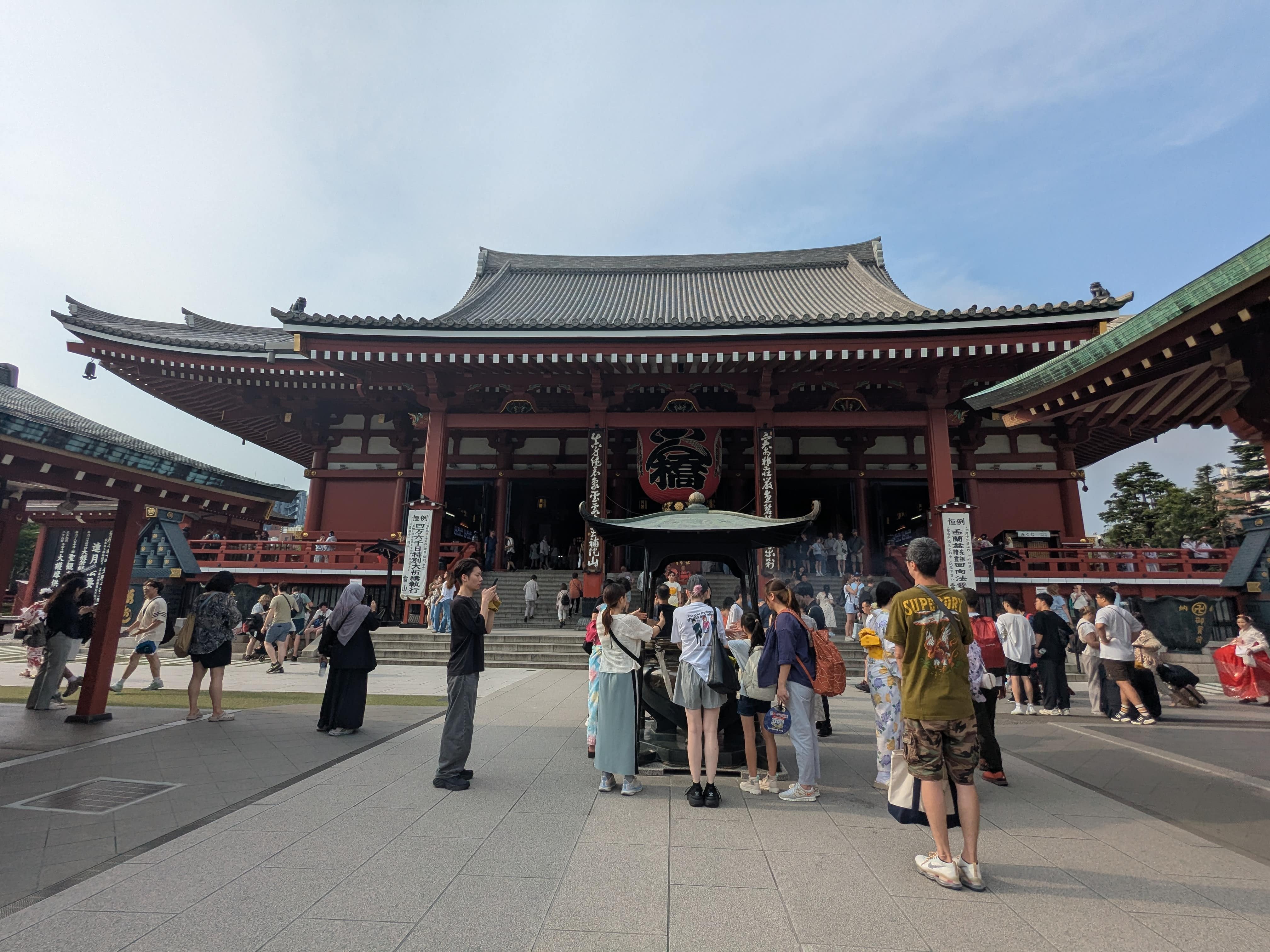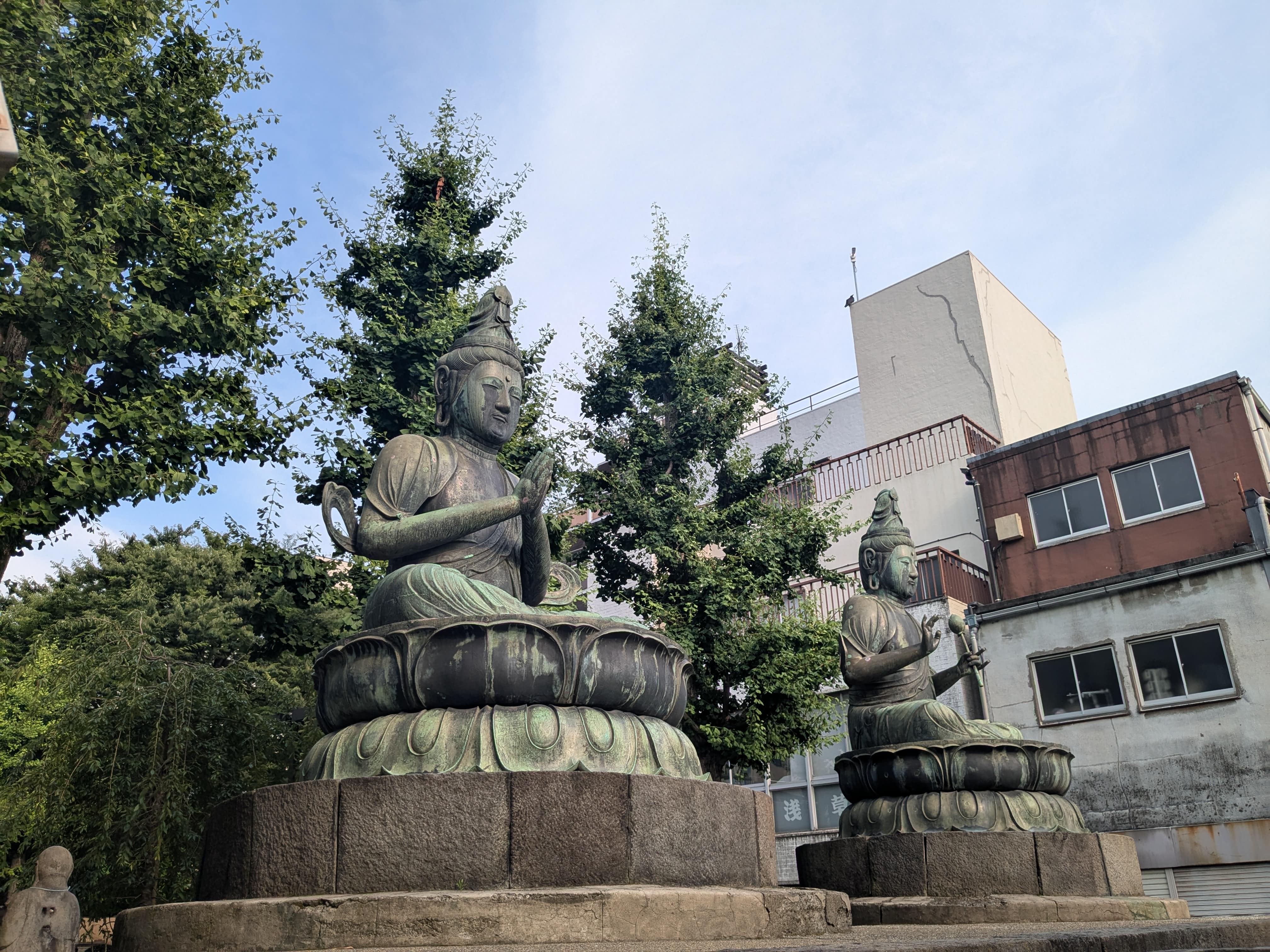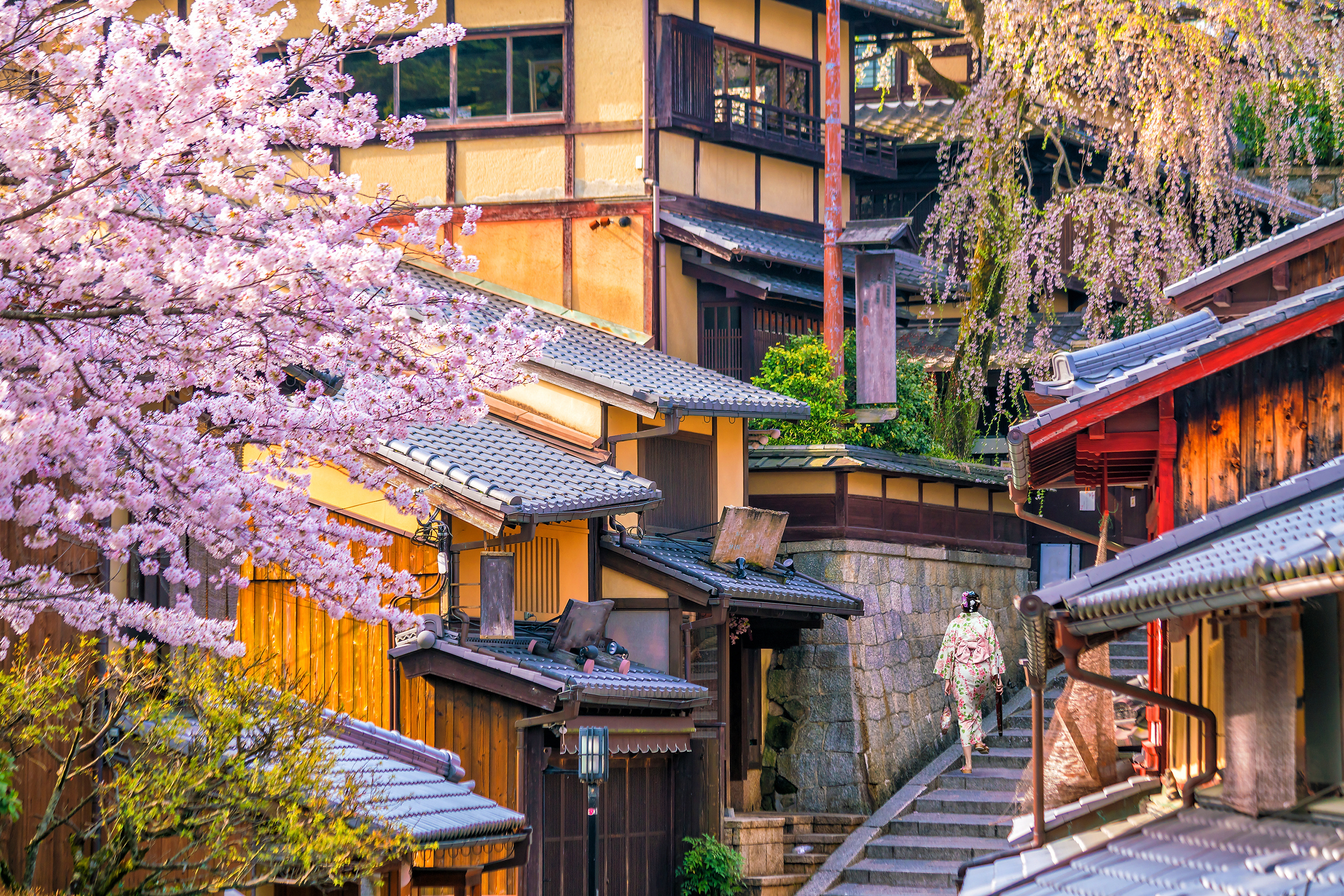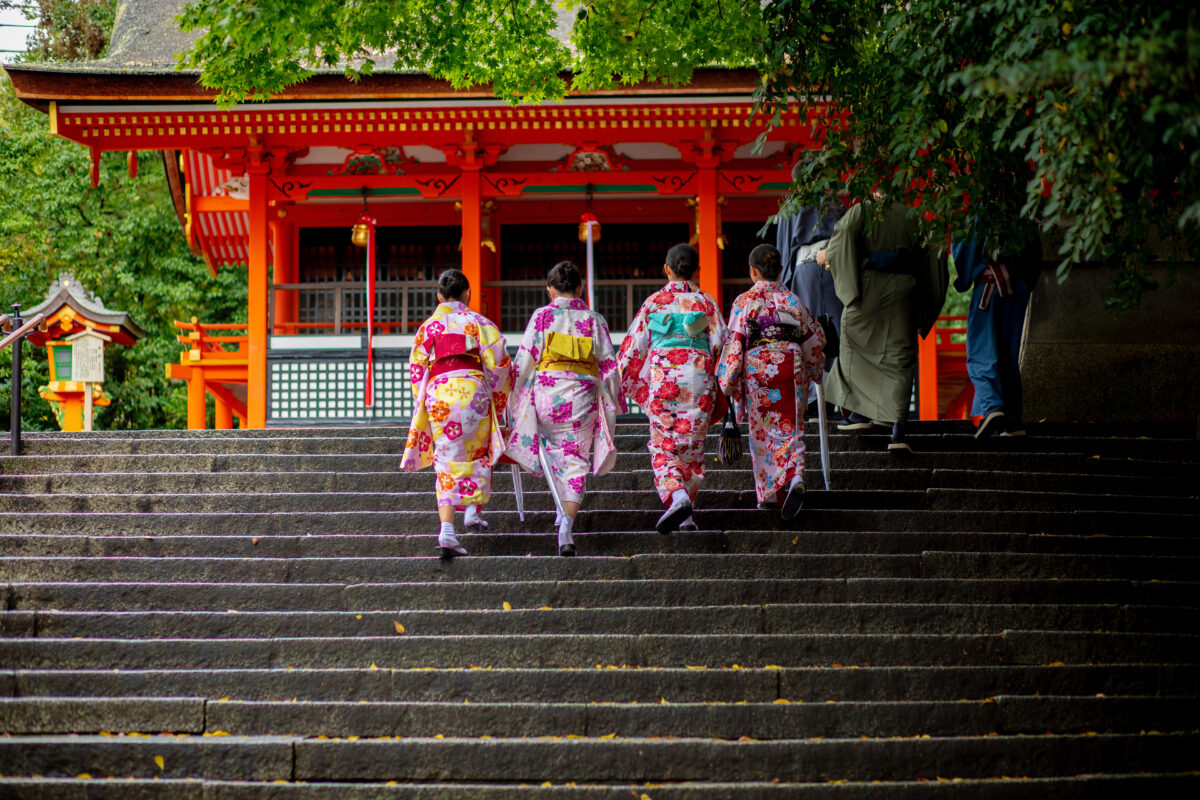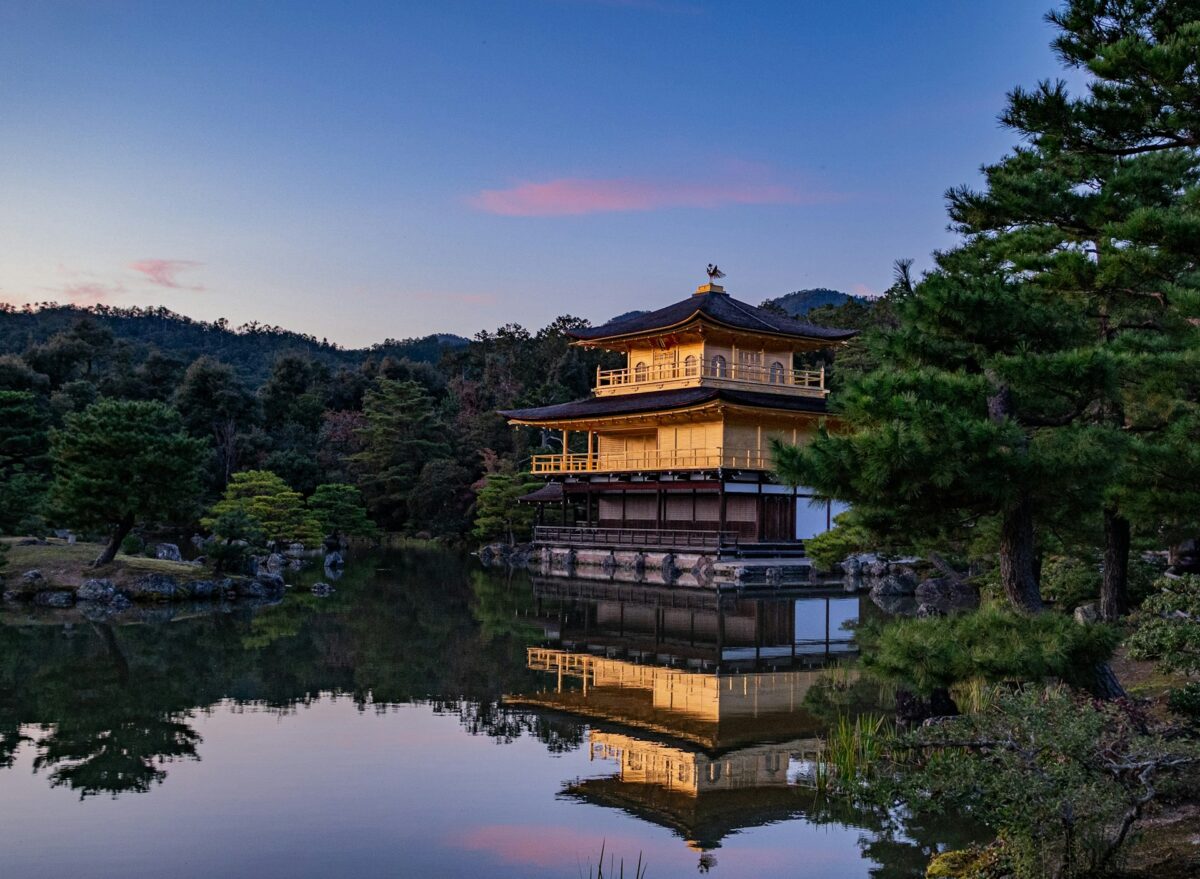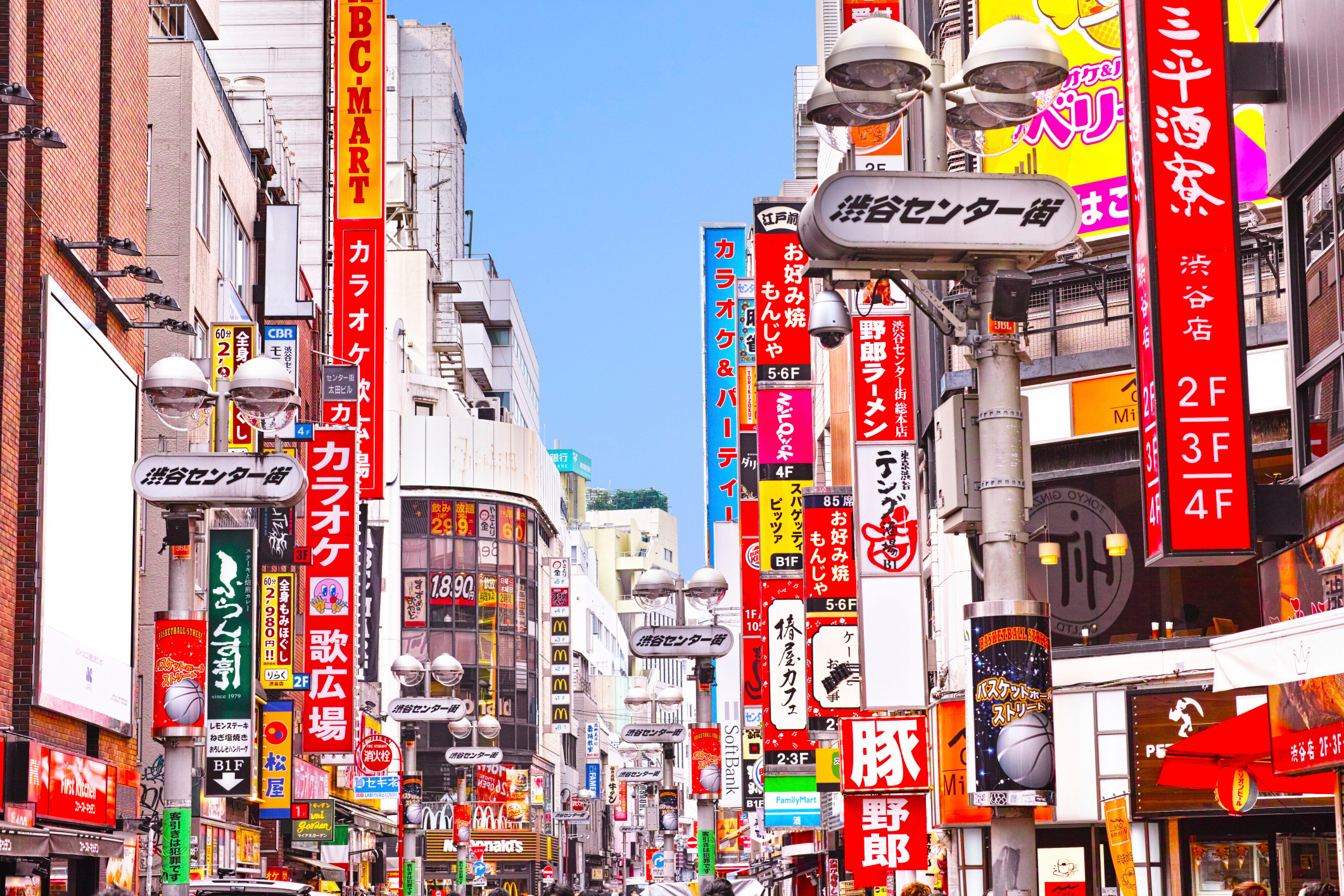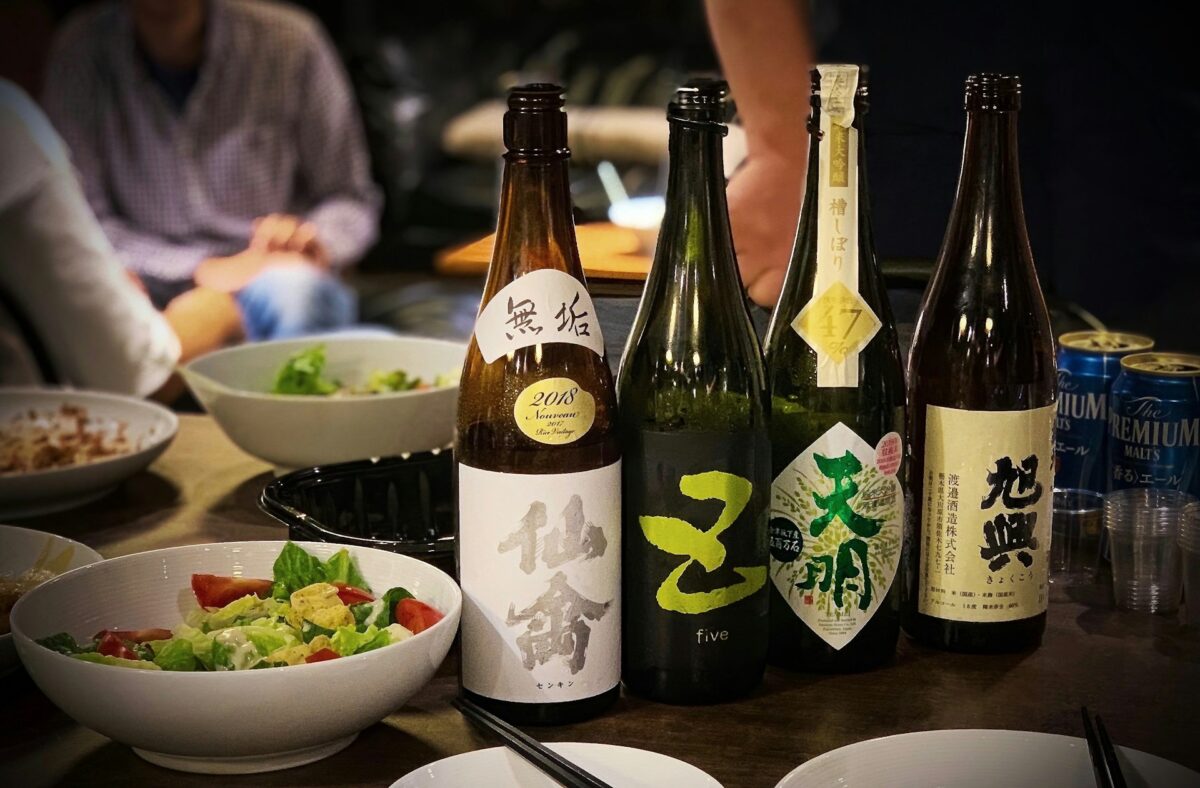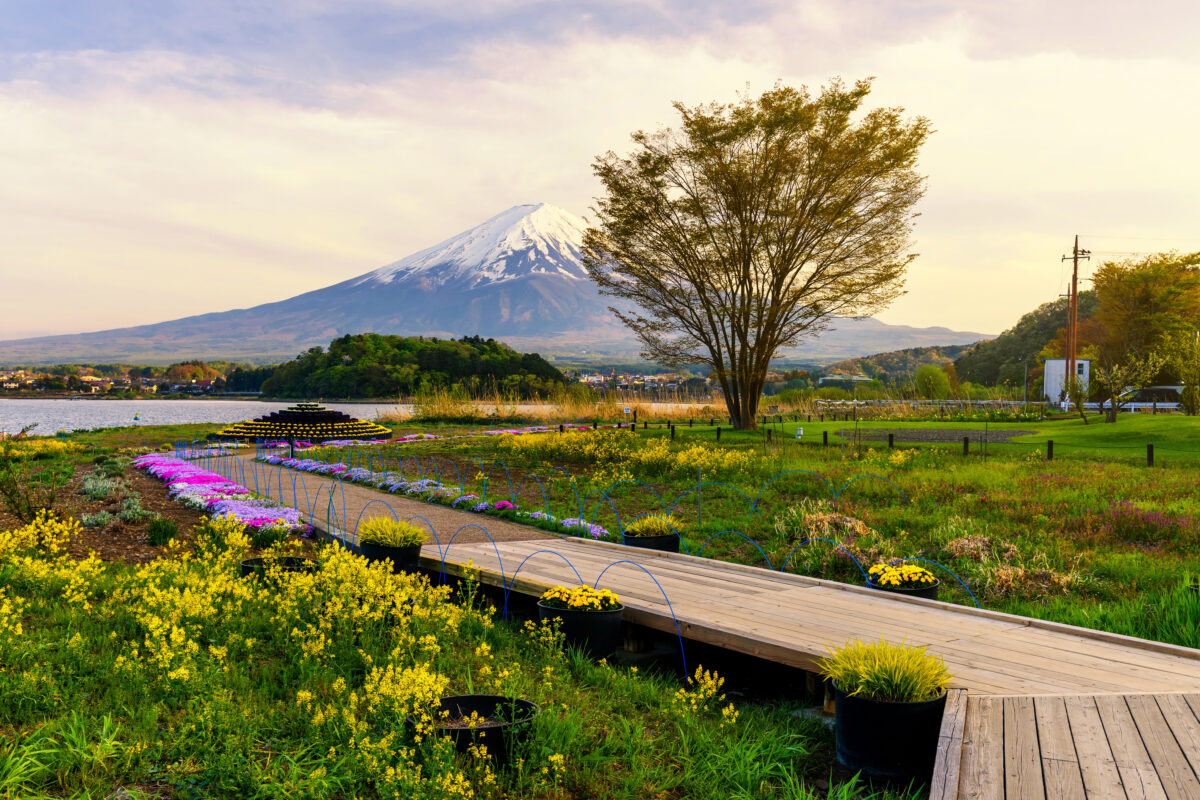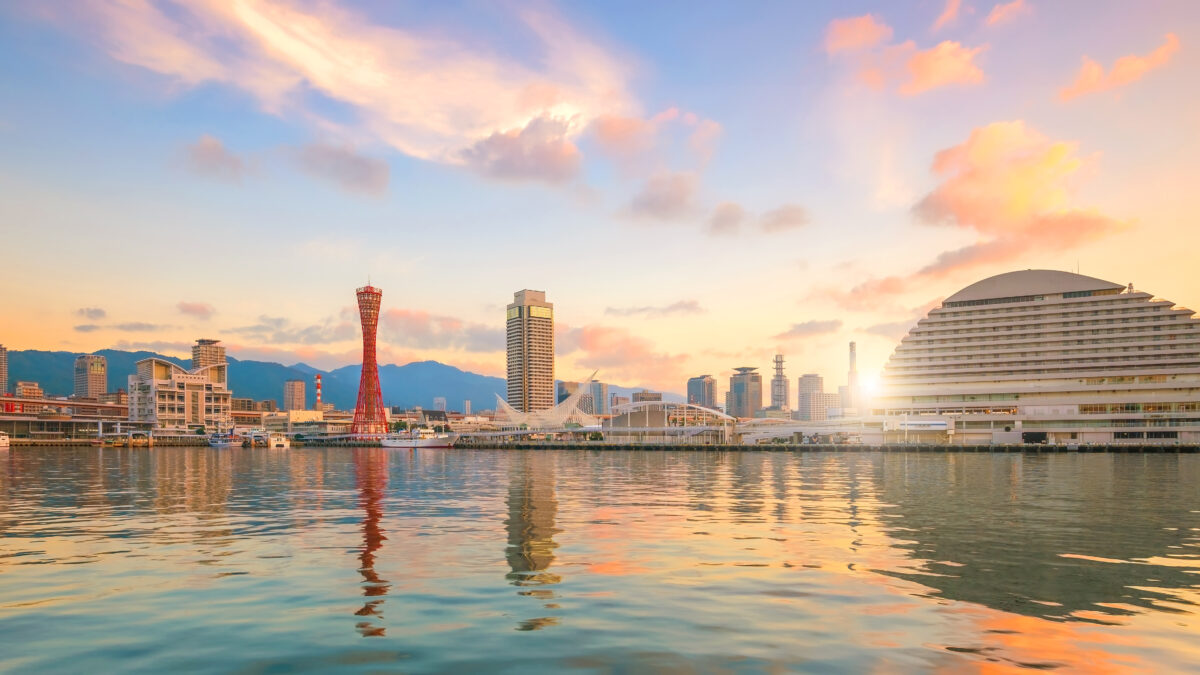Tour details
Collapse
| Tour Provider | Exodus |
| Number of Days | 14 |
| Price From | POA |
| Start Location | Kyoto, Tanzania |
| End Location | Tokyo, Japan |
| Age Range | Avg. 45+ |
| Group Size | 4 to 16 |
| Tour Style | Standard |
| Tour Themes | Adventure |
| Physical Rating | Easy to Moderate |
 |
|
Itinerary
Expand all
Days 1 : Adventure starts in Kyoto
Begin in Kyoto, an atmospheric city amid beautiful hills.
Around 6pm, say konnichiwa to your tour leader and fellow travellers, when we gather as a group for the first time to get to know each other and learn more about the adventures ahead.
Your tour leader then ensures a big welcome by arranging a group dinner.
Want more time in Kyoto? Secure pre-tour hotel nights through your sales representative.
Accommodation: Hotel SUI Kyoto Kiyomizu (or similar)
Days 2 : Visit Nijo Castle, Kinkaku-ji (Golden Pavilion) and Ryoan-ji temple
With more than 2,000 temples, shrines and gardens, Kyoto is a treasure house of Japanese heritage. Unlike many other Japanese towns, it escaped the ravages of both the Second World War and modern urban development, keeping intact much of the spirit and architecture of traditional Japan.
Today, we have an introductory tour of the city. Starting with a visit to the impressive Nijo Castle, built in 1603 as a residence for the Tokugawa shoguns, before moving onto the Golden Pavilion of Kinkaku-ji, built in 1397 as a summer villa for the shogun Yoshimitsu Ashikaga. We then visit the Ryoan-ji temple, home to the most famous rock garden in Japan.
After, we head to central Kyoto, with free time to eat a leisurely late lunch at a local restaurant, relax at the hotel or explore Kyoto more. Alternatively, stroll around Nishiki Market, known as Kyoto’s Kitchen. It’s a great place to find seasonal foods and Kyoto specialties, such as Japanese sweets, pickles, dried seafood and sushi.
Accommodation: Hotel SUI Kyoto Kiyomizu (or similar)
Days 3 : Explore the old capital, Nara • Return to Kyoto and visit Fushimi Inari Taisha and historic Gion
Enjoy a trip to Nara, the ancient capital of Japan (approximately one hour each way). With eight World Heritage sites, it’s second only to Kyoto as a repository of Japan’s cultural legacy. Our walking tour includes a visit to the best-known temples and shrines, including the Todai-ji Great Buddha temple. Built in 752 by Emperor Shomu, this 49ft (15m) tall bronze Buddha is housed in what is reputed to be the largest wooden building in the world. We also spend time in the Nara Kn Park (home to large numbers of overfed and slightly unruly deer) and visit the attractive Kasuga Shinto shrine.
Later in the afternoon, we return to Kyoto and stop at the Fushimi Inari Taisha with its thousands of vermilion torii gates. Fushimi Inari is the most important of several thousands of shrines dedicated to Inari, the Shinto god of rice.
As we head towards early evening, we can walk around Gion, the most famous geisha district in Kyoto. Packed with bars, restaurants and traditional teahouses, Gion is most atmospheric in the early evening, when the lanterns are lit. At this time, we may also see an apprentice geisha on the way to an appointment, though it’s rare to see one.
Accommodation: Hotel SUI Kyoto Kiyomizu (or similar)
Days 4 : Bullet train to Hiroshima • Visit Miyajima island and see the famous floating torii gate
Today is our first ride on the shinkansen (bullet train) as we depart Kyoto and speed to Hiroshima (approximately two hours).
We then make a short excursion by local tram and ferry to the beautiful island of Miyajima, where we visit the famous floating torii gate of the Itsukushima Shrine. Built on the water, this torii appears to float when the tide is high; combined with a backdrop of Mount Misen, it’s a sight to behold.
Back in Hiroshima, you have free time to explore. Options include the Hiroshima Orizuru Tower to visit the observation deck and bar with views over Peace Memorial Park. Alternatively, there’s the feudal-era Shukkeien Garden for a peaceful wander around the pond.
Important: As there is no storage for large suitcases on the shinkansen, you will need to pack a small overnight bag for two nights (nights 4 and 5). You are reunited with your main luggage at the Kanazawa hotel on Day 6.
Accommodation: Dormy Inn Hiroshima Annex (or similar)
Days 5 : Visit Hiroshima Peace Memorial Park • Afternoon transfer to Kobe
Spend time at Hiroshima’s Peace Memorial Park and Museum, both monuments to the fateful day in August 1945 when the city was struck by the first wartime use of the atomic bomb. In the park, there’s a symbolic flame that will only be extinguished when the last nuclear weapon on Earth has been destroyed.
After, we head to Kobe by shinkansen (approximately 1hr 45min) where we stop for the night. This compact port city is easy to explore on foot, so food-lovers might want to head out and try the world-renowned Kobe beef at source.
Other optional adventures you could have include taking the ropeway to Kobe Nunobiki Herb Gardens, the largest herb garden in Japan, or visiting the historic district of Nankinmachi, also known as Kobe Chinatown.
Accommodation: Kobe Motomachi Tokyu REI Hotel (or similar)
Days 6 : Train to Kanazawa • Explore the Kenrokuen Gardens
Hop in a Thunderbird train this morning and travel (approximately 3hr 15min) north to Kanazawa, tracking the shores of Lake Biwa, the largest freshwater lake in Japan.
In the western Ishikawa Prefecture, Kanazawa is an atmospheric town that once rivalled Kyoto as the historic jewel of mainland Japan and is renowned for its arts, wealth and abundant seafood.
After lunch in Kanazawa, we visit the Kenrokuen Gardens, which is considered one of the most beautiful gardens in Japan with a large artificial pond and flora that changes dramatically through the seasons.
Accommodation: Hotel Amanek Kanazawa (or similar)
Days 7 : Explore the Nagamachi samurai district • Visit Omicho Market and the historic Higashichaya geisha district
Start with a trip Nagamachi, the samurai district of Kanazawa during the Edo period. Here, we visit the Nomura Samurai House & Garden, a well-preserved representation of a wealthy samurai’s home.
We then further explore Nagamachi, finding samurai residences, narrow lanes and canals. This afternoon is free to enjoy this vibrant town some more. Consider a visit to Higashi Chaya, one of Kanazawa’s largest geisha districts.
After, we visit the 300-year-old Omicho Market, a bustling marketplace where chefs, locals and visitors stock up on fresh produce, including freshly caught seafood from the Sea of Japan. Then, it’s to the historic geisha district of Higashichaya, before we take public transport back to the hotel.
Important: You need to pack a small overnight bag as your luggage will be transferred to Takayama tonight. You are reunited with your main luggage at the Takayama hotel on Day 8.
Accommodation: Hotel Amanek Kanazawa (or similar)
Days 8 : Bus to Takayama via a historic village in Shirakawa-go
We travel (approximately 1hr 30min) by bus to Shirakawa-go, a secluded mountainous region where the historic villages are populated by gassho-zukuri – uniquely designed farmhouses with steep thatched roofs that were built to withstand heavy winter snowfall and provide a large attic space for the cultivation of silkworms. Take a leisurely walk through the picture-perfect mountain village, with the opportunity to visit some of the oldest buildings.
After, we transfer (approximately one hour) by bus to the old town of Takayama, where we visit the Hida no Sato Open-Air Museum, a collection of 30 traditional Hida houses and other village buildings from the Edo period.
We spend two nights in Takayama with plenty of time to appreciate the charm and ambience of this delightful spot in the majestic Hida Mountains.
Accommodation: Classic hotel
Days 9 : Orientation tour in Takayama • Free day to explore the peaceful shrines and temples
Today has been set aside to explore Takayama. We start with an orientation tour, which begins at the Morning Market, held daily alongside the Miyagawa River. We also wander around the historic Sanmachi district, before free time to explore, in which you can treat yourself to a local lunch and sake tasting, before stopping at the numerous lacquerware and antique shops. You may also want to visit the old Government House of Takayama-jinya to learn about the lives of medieval Japanese officials and the way they dealt (often not so compassionately) with those in their charge.
Another option is to stroll along the temple-lined Higashiyama Walkway and visit the temples and attractions created by the medieval warlord, Kanamori Nagachika.
Accommodation: Classic hotel
Days 10 : Direct bus to Matsumoto • Explore Matsumoto Castle
This morning, we travel (approximately 2hr 30min) by direct bus to the historic castle town of Matsumoto, where we can first drop our luggage at the hotel.
We then visit Matsumoto Castle, otherwise known as Crow Castle due to its all-black exterior. Built in 1504, it’s one of the best-preserved castles in Japan, most others having been destroyed following the Meiji Restoration. The castle preserves its original interior and structure, with very tall steps and steep staircases, which some might find difficult to ascend and descend.
For the rest of the day, we have time to relax and enjoy the vibrant atmosphere of the city. You may wish to visit the Matsumoto City Museum of Art (optional, extra cost). We recommend taking a leisurely stroll after dinner to see the impressive Matsumoto Castle by night.
Accommodation: Dormy Inn Matsumoto (or similar)
Days 11 : Journey to Kawaguchiko to visit Oishi Park and kimono museum
This morning, we travel by train and bus (approximately three hours) to the picturesque town of Kawaguchiko, which sits by Lake Kawaguchi. If the conditions are right, you can even see Mount Fuji reflected in the waters.
This afternoon, we visit the lakeside Oishi Park, again with views of Fuji in the right conditions, before visiting Itchiku Kubota Art Museum with its impressive architecture inspired by the natural world and beautiful kimono displays.
Important: As there is no room to store large suitcases on the train and bus today, you need to pack a small overnight bag for one night this morning before departing Matsumoto (night 11). You are reunited with your main luggage in Tokyo on Day 12.
Accommodation: Route Inn Kawaguchiko (or similar)
Days 12 : Travel by bus to Tokyo • City tour including the Senso-ji temple
Depart early and travel (approximately 1hr 45min) by bus to Tokyo. After arrival, we use the highly efficient subway system to visit Tokyo landmarks, including the lively Senso-ji Temple in the old entertainment district of Asakusa and Ueno.
We also visit Ameyokocho, the lively market street just across from Ueno Station, where you can experience a nostalgic downtown Tokyo atmosphere with many eateries and shops under the train tracks. Right by the station, it is also more convenient for access from Shinjuku and for the onward journey to Asakusa.
In the evening, the entertainment possibilities are almost limitless with the Tokyo nightlife as exciting as anywhere in Asia.
Accommodation: Hotel Monterey Hanzomon/Hotel Monterey Akasaka (or similar)
Days 13 : Free day for individual exploration • Optional karaoke farewell night
Today has been left free for individual exploration of Tokyo with a one-day metro pass included. We recommend visiting the forest-wrapped Meiji Shrine. From there, cross over to the upscale Omotesando street, sometimes called the Champs Elysee of Tokyo. If you’re interested in culture or shopping, there are limitless opportunities with districts such as Ginza, known for its exclusive stores, Shibuya, home to the busiest intersection in the world, and Shinjuku, the hub of Tokyo nightlife.
Your tour leader can advise on how best to spend your free day in Tokyo.
This evening, you can join your group and tour leader for a farewell dinner, followed by optional karaoke.
Accommodation: Hotel Monterey Hanzomon/Hotel Monterey Akasaka (or similar)
Days 14 : Adventure ends in Tokyo
You've seen the old and new in Japan, ridden the iconic bullet train and immersed yourself in samurai culture, but now our adventure comes to end.
Alternatively, if you’d like a bit more time to explore energetic Tokyo, speak to your sales representative about extending your stay.
Inclusions
Expand
Japanese cuisine is usually a highlight of any Japan trip. It is based on rice with miso soup and other dishes usually prepared with seasonal ingredients. Seafood is common, and usually comes grilled or deep fried. Sushi and sashimi aside, other staple dishes include soba or udon noodles, sukiyaki (meat, fish and vegetables cooked in broth) and yakiniku (grilled meat).
When food is not included, your tour leader can always recommend the best local eateries and arrange group meals for a full immersion in the varied and excellent local cuisine.
Worth knowing
Food for certain diets (including gluten-free, vegetarian or vegan) is minimal or non-existent in many areas of Japan. The group meals arranged by the tour leader are in traditional eateries where the choices of vegan dishes may be limited to simple salads or boiled rice. However, there are several vegan restaurants in Kyoto and Tokyo. Please let us know before travel of your dietary requirements.
Most stocks, which are common in Japanese cuisine, contain animal products and even vegetable tempura is mostly fried in the same oil as meat or fish. While some substitutions may be possible, strict vegetarian or vegan meals cannot be guaranteed. Those who can consume dashi stocks typically have fewer issues, but for those concerned, we recommend bringing supplementary food items.
— All breakfasts and three dinners
— All accommodation
— All transport and listed activities
— Tour leader throughout
When food is not included, your tour leader can always recommend the best local eateries and arrange group meals for a full immersion in the varied and excellent local cuisine.
Worth knowing
Food for certain diets (including gluten-free, vegetarian or vegan) is minimal or non-existent in many areas of Japan. The group meals arranged by the tour leader are in traditional eateries where the choices of vegan dishes may be limited to simple salads or boiled rice. However, there are several vegan restaurants in Kyoto and Tokyo. Please let us know before travel of your dietary requirements.
Most stocks, which are common in Japanese cuisine, contain animal products and even vegetable tempura is mostly fried in the same oil as meat or fish. While some substitutions may be possible, strict vegetarian or vegan meals cannot be guaranteed. Those who can consume dashi stocks typically have fewer issues, but for those concerned, we recommend bringing supplementary food items.
— All breakfasts and three dinners
— All accommodation
— All transport and listed activities
— Tour leader throughout








